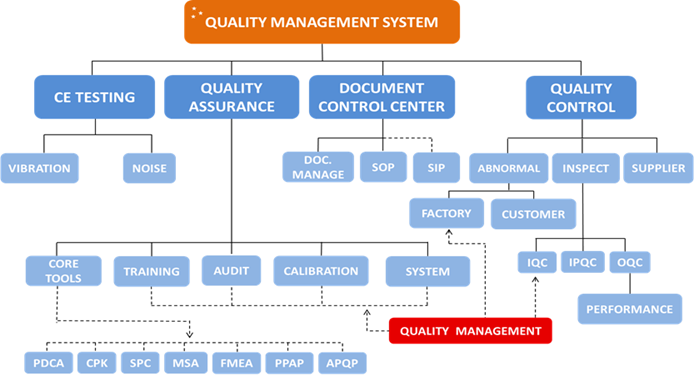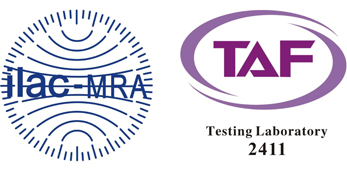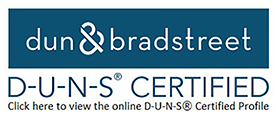Quality Management
- Home
- >
- About Kuani
- >
- Quality Management
KUANI Quality System Mission & Principal
In order to achieve the ultimate goal for sustainable development, the KUANI quality system is set to be unsurpassed. This is because we believe that our company image is determined by the quality of our products and service. Satisfaction with quality products and service is the only way for KUANI to be superior above all other competition.
KUANI use TQM (Total Quality Management) as the principle for the company quality management system. KUANI believe that each member shall participate in improving processes, products, services and the culture in which they work. This is based on the concept of Plan-Do-Check-Act Cycle (PDCA Cycle) applying statistical quality control approaches for continuous improvement.
The four main sections that make up the TQM are,
- ◆Quality Assurance
- ◆Quality Control
- ◆Document Control Centre
- ◆The Power Tool Testing Laboratory
The structure is detailed in the chart below,

Quality Assurance
The purpose of the Quality Assurance Section is,
- ◆Industrial Engineering:
Conduct Failure Mode and Effects Analysis (FMEA) This is to inspect how the problems may be encountered in any part of the management operating system and find a solution to optimize it. - ◆Quality Planning:
Forming and updating the structure of quality system by putting in place clear quality control programs that define the Standard Operating Procedure (SOP) and Acceptable Quality Level (AQL). - ◆Internal Quality Auditing:
Conducting regular internal quality auditing to ensure that each has been operated in line with the SOP. - ◆Quality Management System:
ISO 9001:2015 Certification

Quality Control
Quality Control is mainly applied on the product and its supply chain. This covers the whole production process consisting of IQC (Incoming Quality Control), IPQC (In Process Quality Control) and OQC (Out-going Quality Control). This includes the following,
- ◆Quality Test
The following tests may be applied either partly or all on the parts, components, and/or finished products:- ▪Heavy Drop Testing
- ▪Material Strength Testing
- ▪Life Testing
- ▪Salt / Fog Testing
- ▪Torque Testing
- ▪Fast Leakage Testing
- ▪Performance Testing
- ◆Quality Analysis and Report
Applying Statistical Process Control (SPC) to monitor Key Process Input Variable (KPIV) and control the Key Process Output Variable (KPOV) - ◆Defective Management
- ◆Testing Laboratory Management
- ▪Instrument Applications and Training
- ▪Instrument Calibration and maintenance
Document Control Center
All the documents relating to the ISO 9001:2015 including Standard Operating Procedure (SOP) and Standard Inspect Procedure (SIP) are held within the Document Control Centre.
The Vibration and Noise of Power Tool Testing Laboratory

Kente Co Ltd is the first Vibration and Noise of Power Tool Testing Laboratory in Taiwan and was established by KUANI in 2010 it complies with ISO/IEC 17025 all this has been certificated by TAF and ILAC-MRA.
This laboratory is equipped to assess the vibration and noise level of portable power tools with following the 2006/42/EC Machinery Directive, ISO 11148, ISO 28927 and ISO 15744.



